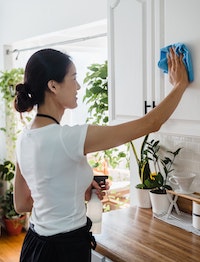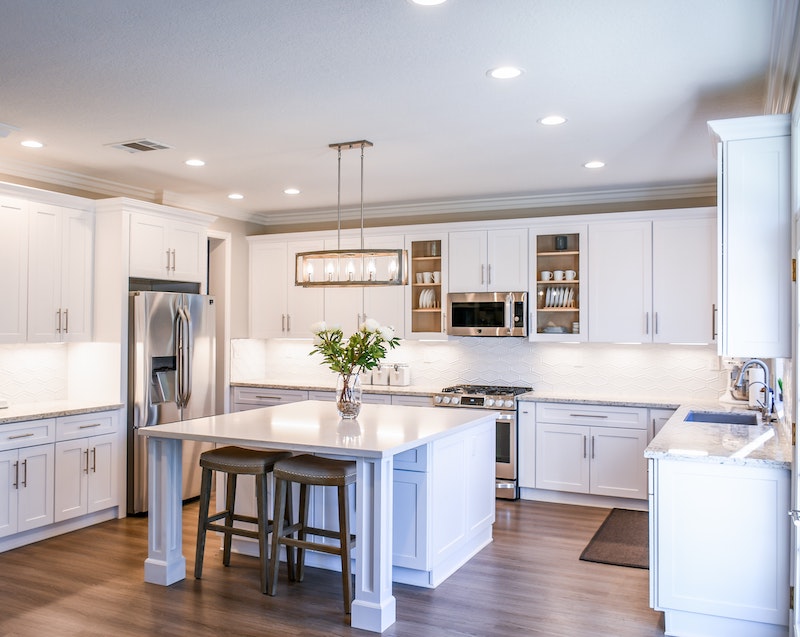Cabinet Care 101: Tips for Prolonging the Life of Your Kitchen Cabinets
by Gary Wade • September 07, 2023
Caring for your kitchen cabinets might not be at the top of your to-do list, but it's a critical aspect of maintaining your home's overall appeal and functionality. Well-maintained cabinets not only enhance the aesthetics of your kitchen but also ensure a longer lifespan for this significant investment. In this comprehensive guide, we'll delve into the ins and outs of cabinet care, offering you valuable insights to help you keep your kitchen cabinets looking and performing their best for years to come.
The Longevity and Investment Aspect
Before we dive into the nitty-gritty of cabinet maintenance, it's important to highlight why this matters. Your kitchen cabinets are a considerable investment, and their longevity is directly tied to proper care. Neglecting them can lead to premature wear and tear, costing you more in the long run. Moreover, if you ever decide to sell your home, well-maintained cabinets can significantly boost your property's value, making it an investment that pays off both now and in the future.
Primary Maintenance Tips for Kitchen Cabinets
When it comes to the essential care of your kitchen cabinetry, uncovering the core maintenance strategies is pivotal.
Cabinet Cleaning Essentials

Regular cleaning is the cornerstone of cabinet care. Dust, grease, and grime can accumulate over time, diminishing the cabinet's visual appeal and potentially causing damage. To keep your cabinets looking pristine, follow these steps:
- Use a mild, non-abrasive cleaner: Opt for a gentle cleaning solution to avoid damaging the finish or surface of your cabinets. A mixture of warm water and a few drops of dish soap often works wonders.
- Soft cloth or sponge: Avoid abrasive scouring pads, as they can scratch the cabinet's surface. Instead, use a soft cloth or sponge to wipe down the cabinets
- Remove hardware: Before cleaning, it's a good idea to remove cabinet knobs and handles, if possible. This allows for a more thorough cleaning and prevents damage to the hardware.
- Wipe in the direction of the wood grain: Always wipe your cabinets in the direction of the wood grain to prevent any potential streaks or damage.
By incorporating these cleaning essentials into your routine, you'll not only maintain the visual appeal of your cabinets but also prevent the accumulation of dirt that can lead to more significant issues down the road.
Preventing Water Damage
Water damage is a common issue in kitchens, and it can wreak havoc on your cabinets. Excessive moisture can cause warping, swelling, and unsightly stains. Here are some preventive measures to safeguard your cabinets against water-related issues:
- Install under-sink mats: Placing mats or trays under your sinks can help catch any leaks or spills, preventing water from seeping into your cabinet's base
- Regularly check for leaks: Be vigilant in inspecting your plumbing for leaks. Even a minor leak can cause significant damage over time.
- Seal seams and edges: Properly seal seams and edges of your cabinets to prevent moisture from infiltrating and causing damage.
By proactively addressing potential water-related concerns, you'll extend the life of your kitchen cabinets and maintain their pristine appearance.
Humidity Control
Humidity levels can impact the long-term condition of your cabinets. Fluctuations in humidity can cause wood to expand and contract, leading to cracking and warping. To maintain optimal humidity levels in your kitchen, follow these steps:
- Use a dehumidifier: Installing a dehumidifier in your kitchen can help regulate moisture levels, especially in humid climates.
- Ventilation: Ensure proper ventilation in your kitchen to allow excess humidity to escape. This can be achieved through exhaust fans and open windows when cooking.
- Wood treatments: Applying wood treatments or finishes can help protect your cabinets from the effects of humidity.
By managing humidity effectively, you'll ensure that your cabinets remain in excellent condition and avoid costly repairs or replacements.
Advanced Cabinet Care Techniques
In the realm of cabinet preservation, delving into advanced care techniques is paramount for ensuring their long-lasting splendor.
Cabinet Refinishing and Restoration
Over time, your cabinets may show signs of wear and tear. Rather than replacing them, consider refinishing or restoring them to their former glory. This not only saves you money but also contributes to sustainability. Here's a step-by-step guide for DIY enthusiasts:
- Remove hardware: Start by removing knobs, handles, and hinges from your cabinets
- Clean and sand: Thoroughly clean the cabinet surfaces and sand them to remove old finishes or imperfections
- Apply finish: Choose a finish that complements your kitchen's aesthetic, and apply it evenly to the cabinets, following the manufacturer's instructions.
- Reattach hardware: Once the finish is dry, reattach the cabinet hardware, and your cabinets will look like new.
Refinishing and restoring your cabinets not only enhances their appearance but also extends their lifespan, making it a cost-effective and eco-friendly choice.
Hardware Maintenance
Cabinet hardware, such as knobs and hinges, plays a crucial role in the functionality and aesthetics of your cabinets. To keep them in optimal condition, follow these maintenance tips:
- Regular cleaning: Periodically clean hardware with a mild solution to remove dirt and grease buildup.
- Tighten screws and hinges: Loose hardware can lead to issues with cabinet doors and drawers. Ensure all screws and hinges are securely fastened. By maintaining your hardware, you'll ensure smooth operation and longevity for your cabinets.
Eco-Friendly Cabinet Care
If you're environmentally conscious, there are plenty of eco-friendly options for cabinet care. Consider the following:
- Non-toxic cleaning products: Opt for environmentally friendly cleaning products that are free from harmful chemicals.
- Sustainable practices: When refinishing or restoring cabinets, choose eco-friendly finishes and materials.
By adopting eco-friendly cabinet care practices, you can maintain your cabinets while minimizing your environmental impact.
Organizing and Maximizing Cabinet Space
Efficient cabinet organization not only makes your kitchen more functional but also prolongs the life of your cabinets by reducing wear and tear. Here are some strategies:
- Use shelf liners: Shelf liners protect cabinet surfaces from scratches and spills.
- Dividers and organizers: Install dividers and organizers to maximize the space within your cabinets, preventing clutter and damage.
By implementing these strategies, you'll not only make your kitchen more efficient but also extend the life of your cabinets.
Long-Term Cabinet Maintenance Schedule
Maintaining your cabinets isn't a one-time task; it's an ongoing commitment. To ensure their longevity, create a regular maintenance schedule. Here's a sample to get you started:
- Weekly: Wipe down cabinets with a damp cloth to remove dust and debris.
- Monthly: Check for loose hardware and tighten as needed. Inspect for signs of water damage or warping.
- Annually: Consider refinishing or restoring your cabinets if they show significant wear.
Cabinet Care Wrap-up
Proper cabinet care is essential for preserving the beauty and functionality of your kitchen cabinets. By following the maintenance tips outlined in this guide, you can ensure that your cabinets remain in excellent condition for years to come. Remember that investing in cabinet care not only enhances your kitchen's aesthetics but also protects your valuable investment.


